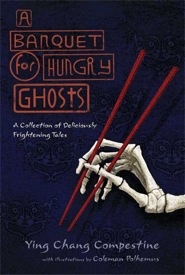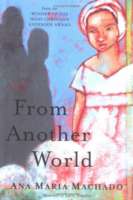Kathy G. Short, University of Arizona


An exploration of strategies for pairing and reading books alongside each other was at the heart of my teaching in a recent global literature course. Once I realized the power of reading books within the context of other books, I brainstormed pairings that could be productive to explore and made stacks of books that I sorted and resorted to find different points of connections. I was intrigued by how my understandings of a book shifted when that book was juxtaposed with different books. The significance of perspective quickly became clear—the most interesting pairings were ones where the two books offered distinctly different perspectives on a particular event, culture, theme, or issue. The two books needed to challenge each other in some way, not simply be connected by a surface-level topic.
I quickly realized that we needed a range of strategies for reading these paired books. One strategy is to ask everyone to read both novels during the same week. These discussions were compelling as students discussed reading the books against each other and compared differences in their reading experiences depending on which book they chose to read first. When we read the paired sets of informational books with fiction novels the same week, readers decided which to read first based on their own reading preferences. Those who were strong nonfiction readers found that reading the informational book first caught their attention and led them into the novel, while the novel readers needed the story in order to get them interested in the information. We found that the order in which we read books affects our interpretations and understandings.
Reading two novels a week, along with professional readings was a heavy load, so we played with multiple ways of reading paired books. One was to read one book the first week and then the second book the next week, which provided for a stronger contrast of the differing perspectives across the books. Another strategy was to have four small groups each reading a different novel related to the same theme, in our case the theme of literacy. Students first met in small groups to discuss their novel and to develop webs of the significant themes related to literacy. We reorganized into text set groups with one person from each novel group in a new group where everyone had read different novels. They shared the central plot and themes of their books and looked for connections and comparisons on literacy across the books. A variation of this was that we read two novels with the class split in half and so first met in small groups for discussion, then paired the two groups who had read the same novel for a comparison of the ideas developed in their small groups, and finally met as a class to compare the two books.
We also took the responsibility for finding our own paired books after a number of experiences with paired novels that I had put together. When we read different translated novels for small group discussions, students brought one or two books that they thought would pair well with their novel in offering a different perspective, and shared those books in their literature discussion. The task of searching for books connected to issues or themes in the novel, but provided a different perspective, created deeper understanding and insights into the novel. When we read historical novels from a range of countries, students engaged in internet research on the time and place and brought that information to the literature circle.
Finally, another important pairing was pairing novels with professional readings. For example, we read novels in which the characters engage in cross-cultural experiences, moving from one culture to another, such as Benny and Omar (Eoin Colfer, 2007) and Hannah’s Winter (Kierin Meehan, 2009). These novels were paired with professional readings on intercultural learning by Case (1991) and Fennes and Hapgood. (1997). We first met in small groups to discuss the novels, followed by a discussion of the professional readings. Students then returned to their literature circles to analyze the intercultural learning of the main characters in relation to the professional readings.
In addition to these strategies for engaging in the reading, we used a range of response strategies to help us see connections and differences across the books. These strategies included venn diagrams, webs, t-charts, and comparison charts. For one set of books, we created heart maps for the two main characters in the two novels to show the values and beliefs at the heart of each one and then cut out the hearts and positioned them to show how much their hearts did or did not overlap. For another paired set, we created a three column chart to show how the two books Connect to each other, Extend each other, and Challenge each other.
The key to effective paired books and text sets is perspective, not finding the right answer or point of view, but considering multiple, even opposing, views on the same event or issue. This experience challenges us to recognize our own views as only one of many possible perspectives, instead of as the norm. Whether we shift our beliefs or not is not the point, just knowing that other alternatives exist provides for a deeper understanding of our lives and world.
Case, R. (1991). Key elements of a global perspective. Social Education. 57 (6), 318-325.
Fennes, H. & Hapgood, K. (1997). Intercultural learning in the classroom. London: Cassell.
Journey through Worlds of Words during our open reading hours: Monday-Friday, 9 a.m. to 5 p.m. and Saturday, 9 a.m. to 1 p.m. To view our complete offerings of WOW Currents, please visit archival stream.
- Themes: Kathy Short
- Descriptors: Books & Resources, Student Connections, WOW Currents

The process of giving “choice” to the reading order of text-sets or professional writings-text, etc, is a remarkable concept when considering all the influences that are negotiated in these shifted spaces in the relative nterpretations and understandings of the text sets. I wonder if a pre-writing exercise compared to an-end-of-a- set reflection exercise would reveal some of this process?
I am currently taking an International & Global Juvenile Literature course, and our professor is exposing us to the power of paired books in many of the ways described. Last week we read Boys Without Names and Iqbal to explore the theme of child labor. As mentioned, reading two books, plus professional reading, in one week is a heavy load, but it helped me sink into both texts much more deeply than I think I would have otherwise if it had been more spread out. As a teacher new to international children’s lit, this intensity has been the most helpful in giving me more perspective and tools to select textsets and pairings in the classroom. It’s really worth it! The amount of reading can be daunting, but I am also finding it to be extremely gratifying as I figure out provacative pairings that stimulate rich intertextual and thematic connections. Thank you for the broad list of considerations and strategies.
Reading two books with a similar theme, but covering completely different areas is both interesting and intelectually challenging in terms of what will be ways in which comparisons and contrasts will be made. This is a great exercise with a multitude of possibilities. Discussions of the books as well as lots of details and background information should be covered first. Then, one can explore the ways to approach the various similarities and differences. I like the idea of using themed books in pairs or groups. It really makes you think a lot more when you have to work with sets of issues from different perspectives, and is a great way to teach with students as well.